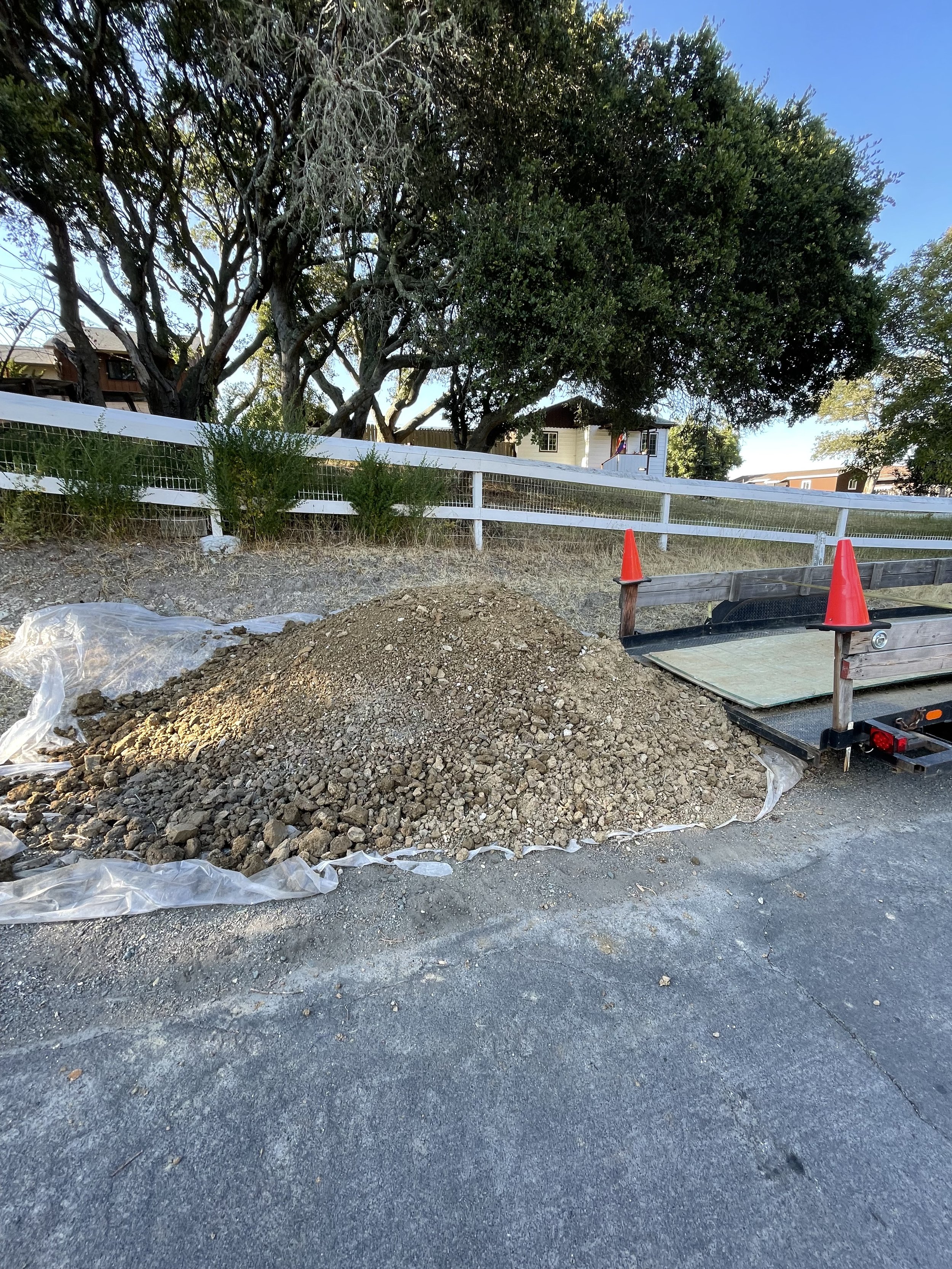Here we subcontracted a waste bin at a job site in Oakland, CA. Several costs needed to be addressed for the estimation. What are costs to rent the bin and for how long? What does local county say about requiring a No Stopping sign and how much would the fees be? All of these factors must be addressed during the planning phase.
Understanding Construction Waste
Construction wastes from building and remodeling is often hard to predict and often more than you think. It places a burden on the contractor and client when one underestimates the amount it would take to clear out the wastes from a job site. This can happen when estimators include waste factors (by getting more material due to the size and bulk order it comes in from the manufacturer or by including extra material in case labor work requires more of it). Some common wastes from building construction are as follows:
Wood: Timber, plywood, MDF.
Inerts: Concrete, asphalt, bricks.
Metals: Steel, copper, aluminum.
Plastics: PVC pipes, packaging.
Other: Glass, insulation, drywall.
We need to find a better solution of predicting and estimating how much waste will accumulate during the demolition, construction, and finishing phases of a building project while considering eco-friendly routes for each designated waste.
Sustainability Considerations
As an estimator and builder, I would need to figure how to minimize the amount of waste in each building phase. Reduction during the pre-building phase needs to be well drawn out, considering every possibility where waste will accumulate.
Start with Planning: Minimize waste through detailed planning. Using accurate measurements and then depending on the waste product, add a 10% waste factor which will help estimate the cost it will take to rent or build a waste bin; demo and remove the material; and include transport and waste facility fees.
How many trips will it take given the size of your waste bin? Do this for every phase of the job description. Just when you think you have the estimation costs down to a tee, the amount of building material might be overestimated and your left with more waste than you previously thought; thus, requiring more trips.
Material Selection: Choose durable, long-lasting materials. The material used for fixed structures, such as framing, metals, appliances should come with high quality and a long warranty. This will raise the price of the quote but a reputation of good workmanship demands good quality material.
Recycling & Reuse:
Sorting: Allocate separate bins for wood, inerts, and metals.
Recycling Centers: Identify nearby recycling facilities. Are you using your own company vehicle or subcontracting the transfer and disposal of the waste.
Reuse Materials: Utilize salvaged materials where possible.
Here we transferred excavated soil from the job site to a nearby neighbor that needed it for his own project.
Logistical Considerations
Placing a dedicated bin at the job site will help to sort and allocate various waste products.
As a contractor, become familiar with the surrounding area of the job site.
Availability of waste facilities within the area.
Local ordinances and regulations (permits, hazardous waste materials that need special contracts, barricades and containment of waste)
Prices and delivery from local waste truck companies.
The conditions of the roads leading to the project. This is an important one — can large trucks reach the job site safely and not obstruct public roads?
There is so much indirect field costs to estimate and I found waste management one of the more difficult areas in estimation. A lot of it came from experience but having a well drawn out and deliberate method of estimating enables to create less burden for building construction estimation.


